These images, via NPR, are of 86-year-old Zhou Guizhen. We were hesitant about posting them when they were first forwarded to us (without information of where they came from) because of concerns about how the pictures were taken–were they taken by a tourist, who was viewing this woman as a freak to laugh at? We were also concerned that presenting these pictures would objectify her, turning her into evidence that non-Western societies are barbaric and backward (and, therefore, that those of us in the West should pat ourselves on the back for how enlightened we are). This would be similar to how Muslim women who wear veils are used in discourses about how oppressive and barbaric Muslim societies are, with no allowance for the many meanings a veil can have and the fact that women are actors in their societies and may not all view the veil as automatically or unequivocally oppressive.
Ultimately we decided to post them when we were able to ascertain that they are publicly available. Also, the very fact that we ourselves struggled with what to make of them and how to present them, seemed to indicate that they are very powerful images that bring up complicated ideas about women, bodies, objectification, and how these are connected to judgments of the modernity or backwardness of cultures.
We post these pictures with the intention that we view this woman as a human being who embodies a complicated tradition. This means that we refrain from calling her, her body, or her culture any names that we would not want to be called ourselves (names like “grotesque,” “ignorant,” or “barbaric”). We hope that, as we view these images, we are mindful of the ways that bodies are altered across the globe and throughout history… not only in places that we do not understand, but in places that we understand only too well.

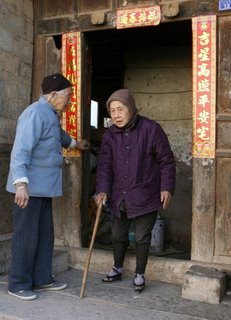

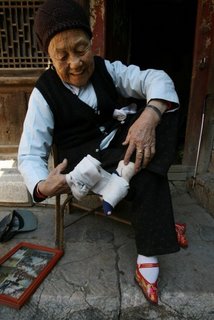
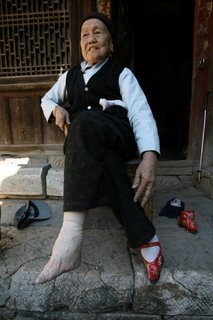
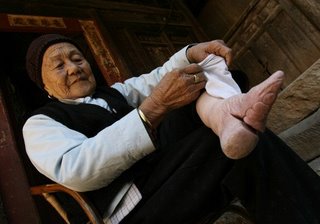
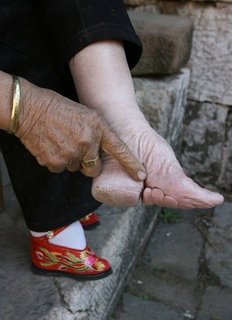

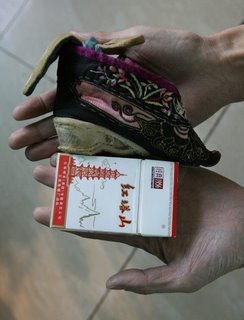
Comments 8
Nick — February 22, 2008
While we might be reticent to apply any of the labels you mentioned in the last paragraph of your post, I think that one might easily call a spade a spade and say that the practice is "unhealthy". In the sense that this practice can impede the optimal function and utility of a human body, footbinding falls into the same category as eating disorders, excessive cosmetic surgery, and other harmful practices undertaken by women the world over in their efforts to conform to a societal standard.
Anonymous — March 30, 2008
This was actually used as part of a segment on Chinese footbinding culture in National Geographic. I think you can put your mind at ease as to the origins of the photos and information.
Sociological Images » Think your shoes are uncomfortable? — May 13, 2008
[...] binding images. You can also follow this link to an NPR story on footbinding survivors and click here for a set of images related to the story. addthis_url = [...]
Jacquelyn Avery — October 5, 2009
To Nick who is obviously oblivious of his own vast ignorance:
Footbinding is not a voluntary procedure like eating disorders or cosmetic surgery. It is inflicted on female babies at birth and for many years afterward to keep their feet, and ultimately their place in society small. It is an extremely painful procedure that limits a woman's mobility forever.
Educate yourself, Nick before you shoot your mouth off again.
VICKY — March 20, 2013
It's quit disguisting you know,
Nancy Davis — July 15, 2020
Why would they continue to wear those small shoes if they don't have to
Nancy Davis — July 15, 2020
I thought that practice was outlawed in the 50s